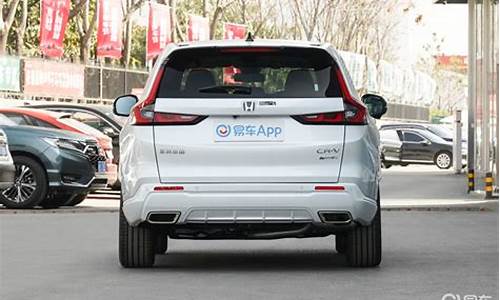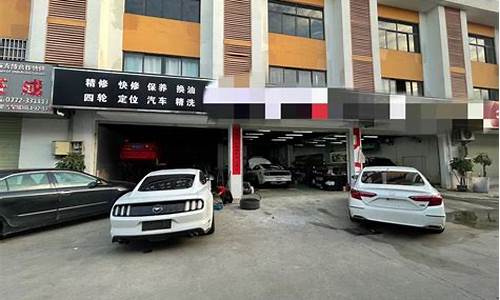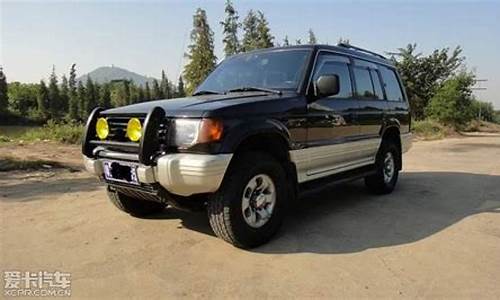您现在的位置是: 首页 > 看车用车 看车用车
apollo namespace
佚名 2024-05-24 人已围观
简介apollonamespace今天,我将与大家共同探讨apollonamespace的今日更新,希望我的介绍能为有需要的朋友提供一些参考和建议。1.关于神舟七号英语短文2.美国几次成功登陆月球?3.阿波罗13号的英文观后感怎么写100字高一的4.[英文]关于月球的英文文章关于神舟七号英语短文神舟七
今天,我将与大家共同探讨apollo namespace的今日更新,希望我的介绍能为有需要的朋友提供一些参考和建议。
1.关于神舟七号英语短文
2.美国几次成功登陆月球?
3.阿波罗13号的英文观后感怎么写100字高一的
4.[英文]关于月球的英文文章

关于神舟七号英语短文
神舟七号”航天飞船将于今日21时07分至22时27分在酒泉卫星发射中心择机发射,由3名宇航员组成的乘组将执行神七飞行任务。神七将在太空飞行七天,飞船运行期间,两名航天员将进入轨道舱,进行出舱活动准备,其中一名航天员出舱将进行舱外活动,回收在舱外装载的试验样品装置。在神七飞天之际,我们一起来学习一下相关航天词汇:
“神舟号” Shenzhou (Divine Vessel)
神舟七号 Shenzhou VII
载人飞船 manned spaceship/ spacecraft
载人航天 manned space flight
载人航天计划 manned space program
航天服 space suit
无人飞船 unmanned spaceship / spacecraft
试验太空船 Experimental Spacecraft
多级火箭 multistage rocket
太空舱 capsule
返回式卫星 recoverable satellite
通信卫星 communication satellite
遥感卫星 remote sensing satellite
运载火箭 carrier rocket; rocket launcher
长征二号F运载火箭 Long March II F carrier rocket (“神舟七号”运载火箭)
有效载荷能力 payload capability
近地轨道 low Earth orbit
气象卫星 weather satellite; meteorological satellite
太阳同步轨道卫星 satellite in Sun-synchronous orbit
同步轨道卫星 geosynchronous satellite
轨道舱 orbital module
返回舱 re-entry module
推进舱 propelling module
指令舱 command module
服务舱 service module
太空行走 space walk
舱外活动(即“太空行走”)extra-vehicular activity(EVA)
发射台 launch pad
紧急供氧装置 emergency oxygen apparatus
空间物理探测 space physics exploration
国际空间站 International Space Station
太阳能电池板 solar panel
太空升降舱 space elevator
外太空 outer space; deep space
银河系 Milky Way
阿波罗号宇宙飞船 Apollo
美国航空航天管理局 NASA(The National Aeronautics and Space Administration)
发射卫星 launch a satellite
发射升空 blast off
发射台launch pad
轨道orbit
人造卫星 artificial satellite
天线 antenna
着陆架 landing pad
定向天线 directional antenna
上升段 ascent stage
下降段 descent stage
舱口 hatch
扶梯 ladder
应急供氧装置 emergency oxygen apparatus
生命维持系统 life support system
地面操作系统 ground operation system
逃逸塔 escape tower
消毒服 sterilized uniforms
空间遥测系统 space telemetry network
领航宇航员 lead astronaut
发射时限;发射窗 launch window
美国几次成功登陆月球?
Apollo 13 was the third manned lunar-landing mission, part of Project Apollo under NASA in the United States. The crew members were Commander James A. Lovell, Command Module pilot John L. "Jack" Swigert, and Lunar Module pilot Fred W. Haise. It launched on April 11, 1970 at 2:13 EST. Two days after the launch, the Apollo spacecraft was crippled by an explosion, caused by a fault in an oxygen tank. The explosion damaged the Service Module, resulting in a loss of oxygen and electrical power. The crew used the Lunar Module as a “lifeboat” in space. The command module remained fully functional on its internal batteries, but they were needed for re-entry and landing so it was shut down shortly after the accident. Despite great hardship caused by severe constraints on power, cabin heat, and potable water, the crew successfully returned to Earth. The mission was thus called a "Successful Failure".
Overview
Director:Ron Howard
Writers (WGA):Jim Lovell (book) &
Jeffrey Kluger (book) ...
more
Release Date:30 June 1995 (USA) more
Genre:Adventure | Drama | History more
Tagline:Houston, we have a problem.
Plot:True story of the moon-bound mission that developed severe trouble and the men that rescued it with skill and dedication. full summary | full synopsis (warning! may contain spoilers)
Plot Keywords:Chewing Gum | Lifeboat | Lunar Module | What Happened To Epilogue | Jury Rigged more
Awards:Won 2 Oscars. Another 17 wins & 26 nominations more
User Comments:A brief synopsis of a great film. more
Cast (Cast overview, first billed only)
Tom Hanks ... Jim Lovell
Bill Paxton ... Fred Haise
Kevin Bacon ... Jack Swigert
Gary Sinise ... Ken Mattingly
Ed Harris ... Gene Kranz
Kathleen Quinlan ... Marilyn Lovell
Mary Kate Schellhardt ... Barbara Lovell
Emily Ann Lloyd ... Susan Lovell
Miko Hughes ... Jeffrey Lovell
Max Elliott Slade ... Jay Lovell
Jean Speegle Howard ... Blanch Lovell
Tracy Reiner ... Mary Haise
David Andrews ... Pete Conrad
Michele Little ... Jane Conrad (as Michelle Little)
Chris Ellis ... Deke Slayton
more
--------------------------------------------------------------------------------
Additional Details
Also Known As:Apollo 13: The IMAX Experience (USA) (IMAX version)
more
MPAA:Rated PG for language and emotional intensity.
Parents Guide:View content advisory for parents
Runtime:140 min
Country:USA
Language:English
Color:Color (DeLuxe)
Aspect Ratio:1.66 : 1 more
Sound Mix:IMAX 6-Track (IMAX version) | DTS-Stereo | DTS
Certification:USA:PG (cut version) | South Korea:12 | Argentina:13 | Australia:PG | Belgium:KT | Chile:14 | Finland:K-8 | France:U | Germany:6 (bw) | Iceland:L | Netherlands:AL | Portugal:M/12 | Singapore:PG | Spain:T | Sweden:7 | UK:PG | USA:PG (IMAX DMR version) | USA:PG (certificate #33862)
Filming Locations:Ambassador Hotel - 3400 Wilshire Boulevard, Los Angeles, California, USA more
MOVIEmeter: 2% since last week why?
Company:Universal Pictures more
阿波罗13号的英文观后感怎么写100字高一的
六次。1、阿波罗11号。阿波罗11号(Apollo 11)是美国国家航空航天局(National Aeronautics and Space
Administration,NASA)的阿波罗计划(Project Apollo)中的第五次载人任务,是人类第一次登月任务。
三位执行此任务的宇航员分别为指令长阿姆斯特朗(Neil Armstrong)、指令舱驾驶员迈克尔·科林斯(Michael Collins)和登月舱驾驶员巴兹·奥尔德林(Buzz Aldrin)。1969年7月21日,阿姆斯特朗和奥尔德林成为了首次踏上月球的人类。
2、阿波罗12号(Apollo 12)是美国国家航空航天局的阿波罗计划中的第六次载人任务,是人类第二次载人登月任务。
3、阿波罗13号(Apollo 13)是美国航空航天局阿波罗计划(Apollo space
program)的第七次载人飞行任务,也是第三次载人登月任务。阿波罗13号于美国中部时间1970年4月11日13:13发射,指令长为吉姆·洛威尔(Jim Lovell),指令舱和登月舱的驾驶员分别为杰克·斯威格特(Jack Swigert)与弗莱德·海斯(Fred Haise)。
4、阿波罗14号(Apollo 14)是美国国家航空航天局实行的阿波罗计划中的第八次载人任务,是人类第三次成功登月的载人登月任务。与1971年1月31日发射。
5、阿波罗15号(Apollo 15)是阿波罗计划(Project
Apollo)中的第九次载人任务,也是人类第四次成功登月的载人登月任务。阿波罗15号还是阿波罗计划中首次J任务——与前几次任务相比在月球上停留更久,科学研究的比例更大。
6、阿波罗16号(Apollo 16)是阿波罗计划中的第十次载人航天任务(1972年4月16日)也是人类历史上第五次成功登月的任务。1972年4月27日成功返回。
[英文]关于月球的英文文章
范文:In April 1970, Apollo 13 was scheduled to land on the moon in NASA's bid to further explore the lunar surface. Instead, an in-flight explosion rocked the spacecraft, preventing astronauts Jim Lovell, Jack Swigert, and Fred Haise from landing on the moon.Their weeklong ordeal in space captivated the world. Now, NASA and the Adler Planetarium in Chicago are celebrating what many call the "successful failure."
By April 1970, man had already landed on the moon and the public's interest in the space program began to wane.
1970年4月,阿波罗13号计划在美国宇航局的努力下登陆月球,进一步探索月球表面。相反,一次飞行中的爆炸震动了宇宙飞船,阻止了宇航员吉姆·洛维尔、杰克·斯威格特和弗雷德·海斯登上月球。
他们在太空中经历了一周的磨难,全世界都为之着迷。现在,美国宇航局和芝加哥阿德勒天文馆正在庆祝许多人所说的“成功失败”,到1970年4月,人类已经登上月球,公众对太空计划的兴趣开始减弱。
英语翻译技巧:
第一、省略翻译法
这与最开始提到的增译法相反,就是要求你把不符合汉语,或者英语的表达的方式、思维的习惯或者语言的习惯的部分删去,以免使所翻译出的句子沉杂累赘。
第二、合并法
合并翻译法就是把多个短句子或者简单句合并到一起,形成一个复合句或者说复杂句,多出现在汉译英的题目里出现,比如最后会翻译成定语从句、状语从句、宾语从句等等。
这是因为汉语句子里面喜欢所谓的“形散神不散”,即句子结构松散,但其中的语意又是紧密相连的,所以为了表达出这种感觉,汉语多用简单句进行写作。而英语则不同,它比较强调形式,结构严谨,所以会多用复杂句、长句。因此,汉译英时还需要注意介词、连词、分词的使用。
第三、拆分法
当然,英译汉的时候,就要采取完全相反的战术——拆分法,即把一个长难句细细拆分为一个个小短句、简单句,并适当补充词语,是句子通顺。最后,注意还需要按照汉语习惯调整语序,达到不仅能看懂而且不拗口的目标。
Moon
Did you ever look at the Moon and think you could see a face? Sometimes dark spots on the Moon look like eyes, a nose, and a mouth. People used to talk about “the man in the Moon.” They would joke about the Moon being made of cheese with holes in it.
The Moon is the second brightest thing in our sky, after the Sun. The Moon doesn’t make its own light. Light rays from the Sun bounce off it and make it shine. The Moon is closer to Earth than any other body in our solar system.
WHAT’S ON THE MOON?
In the 1600s, the famous Italian scientist Galileo was the first person to look at the Moon through a telescope. He saw dark spots that he thought were oceans. He called them maria, the Latin word for “seas.” Galileo thought the light areas were large landmasses called continents.
Today, we know a lot more about the Moon. We know that nothing lives on the Moon, and there are no oceans. The maria are dry, flat plains covered with rocks. The Moon is the only place in space that human beings have visited.
TOUCHING THE MOON
The first astronauts landed on the Moon in 1969. They traveled in a United States spacecraft named Apollo 11. The astronauts set up experiments on the Moon and brought some moon rocks back to Earth. Later, five more Apollo missions explored different parts of the Moon. The astronauts on these missions brought back more rocks and soil.
Scientists learned many things about the Moon from the Apollo space missions. They also learned from other spacecraft that orbited (went around) the Moon. Some of these spacecraft sent robot landers down to the surface of the Moon.
SPACE ROCKS AND CRATERS
The dry, gray Moon might seem like a boring place now. But you should have seen it several billion years ago.
Many times over the past two or three billion years, chunks of rock and ice have come whizzing toward the Moon. The space rocks and ice are asteroids and comets. They slam into the Moon’s surface. The biggest ones came just after Earth and the other planets were formed. When they hit the Moon, these large objects threw up tons of rock and dust. There are billions of big and small pits on the Moon made by the space rocks. These pits are called craters.
ANCIENT VOLCANOES
If you went to the Moon, you’d see the dark-colored maria. Scientists think the dark gray rock is lava (melted rock). They believe that billions of years ago, red-hot rock gushed up from volcanoes on the Moon. The lava flowed over the Moon’s surface. It filled in low places, including some of the big craters. Then the lava cooled to make the Moon’s gray rocks.
The lava also left round hills on the Moon called domes and carved grooves called rilles.
ROUGH HIGHLANDS
There are rough and mountainous places all over the Moon. Scientists call these places highlands.
There are highlands on the far side of the Moon but almost no maria. Only one side of the Moon faces Earth, so you can never see the far side of the Moon. Scientists learned what the far side looks like from pictures taken by orbiting spacecraft.
HOT DAYS AND COLD NIGHTS
The astronauts who walked on the Moon had to wear big space suits. The space suits provided air for the astronauts to breathe, because there is no air on the Moon. The suits also kept the astronauts cool during hot Moon days and warm during cold Moon nights.
With no atmosphere to protect it, Moon temperatures can be very high and very low. It can be 261° Fahrenheit (127° Celsius) at noon during a Moon day—hotter than boiling water! It can be as cold as -279° Fahrenheit (-173° Celsius) on a Moon night. Days and nights on the Moon each last about two weeks.
Days and nights are long because the Moon turns very slowly. It takes the Moon about 27 days to make one turn. Earth turns once every 24 hours.
ICE ON THE MOON?
There is no water on the Moon, but scientists think that there may be ice. Two spacecraft in the 1990s saw signs of the ice. If there is ice on the Moon, it could help future explorers stay there longer.
The signs of ice were found in deep craters at the north and south poles of the Moon. Because these craters are always in shadow, it stays very cold there—about -364° Fahrenheit (-220° Celsius).
THE MOON FROM EARTH
The Moon always seems to change shape. Sometimes it looks like a round ball in the sky. Sometimes it is a thin sliver. But the Moon does not really change shape. What happens to it?
The Moon reflects light from the Sun. How you see the reflected sunlight depends on where the Moon is. The Moon orbits (goes around) Earth. Sometimes it is between the Sun and Earth, and you can’t see any reflected sunlight. This is called the new moon.
Sometimes Earth is between the Moon and the Sun. You can see all of the reflected sunlight. The Moon looks round. This is called a full moon.
The rest of the time, you see only part of the reflected sunlight from the Moon. The reflected sunlight looks like slivers of Moon. It takes about 27 days to go from a new moon to a full moon and back to a new moon again.
WHERE THE MOON CAME FROM
No one knows for sure how the Moon was formed. By testing moon rocks, scientists have learned that the Moon is about 4.6 billion years old. This is the same age as the solar system.
Scientists think that at that time something as big as a planet crashed into Earth. The collision blasted huge pieces of Earth into space. Some of the pieces came together to make the Moon.
Scientists continue to study moon rocks for clues. There is still much to learn about the Moon.
好了,关于“apollo namespace”的话题就讲到这里了。希望大家能够对“apollo namespace”有更深入的了解,并且从我的回答中得到一些启示。









